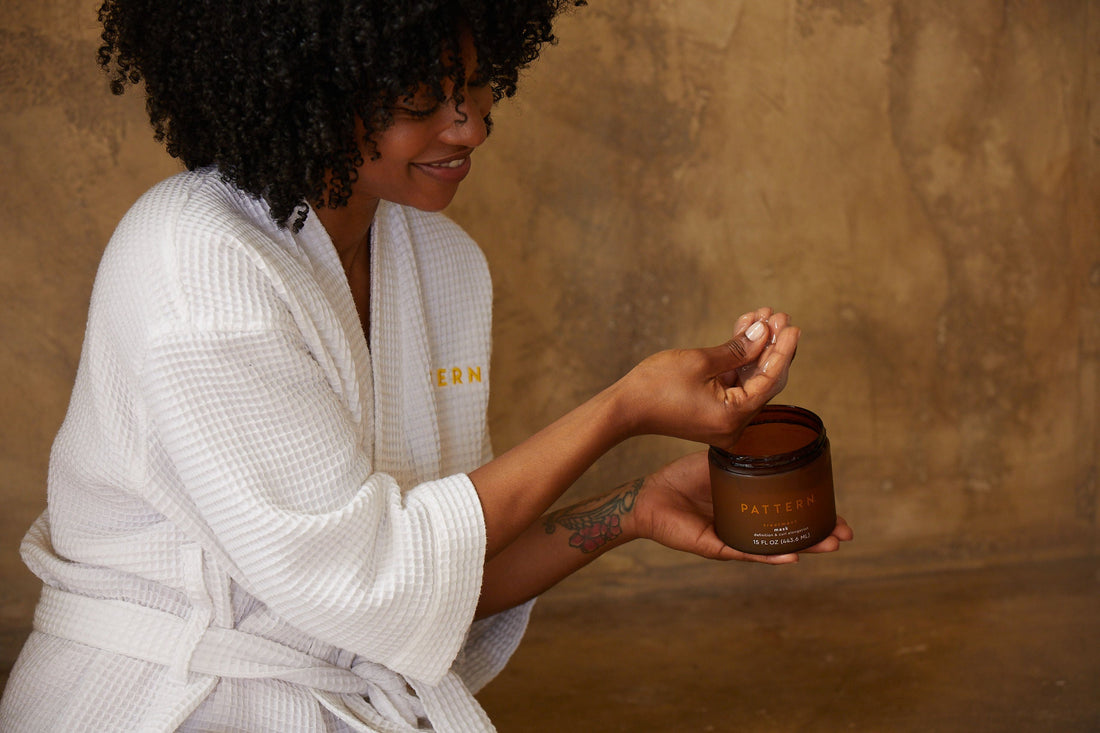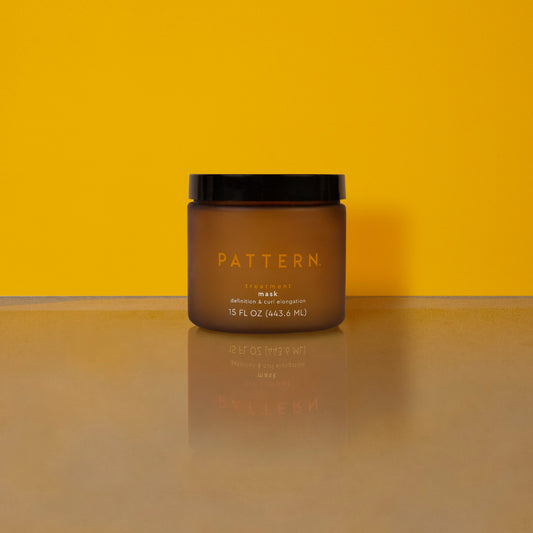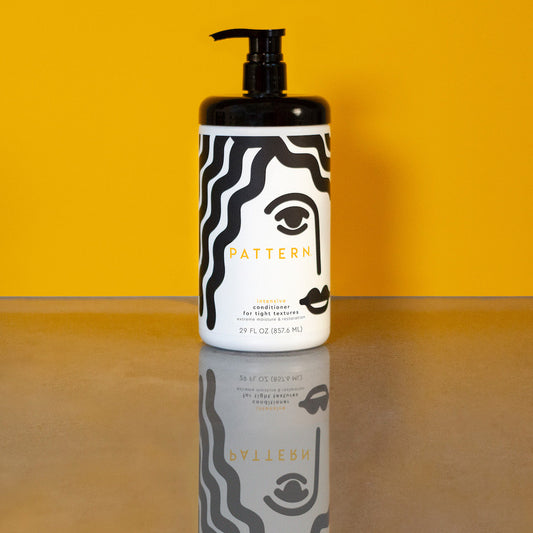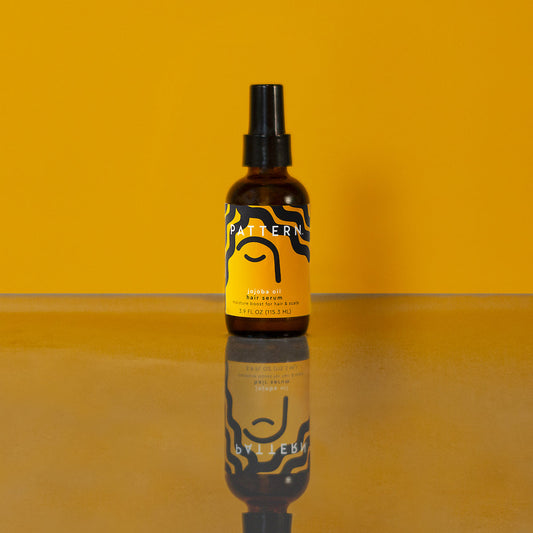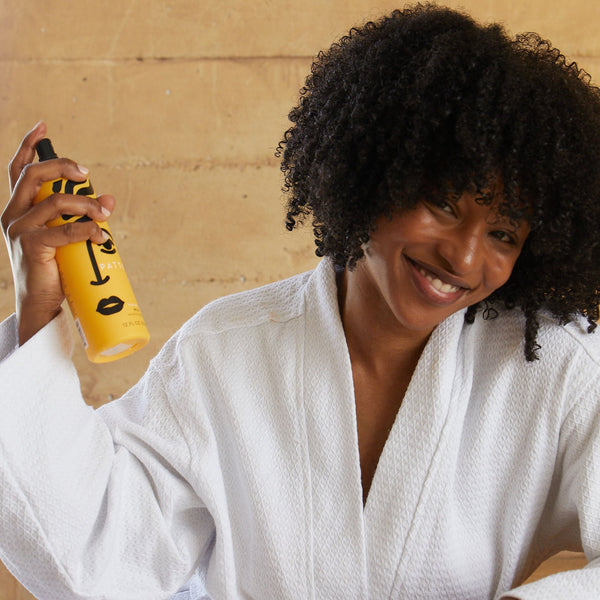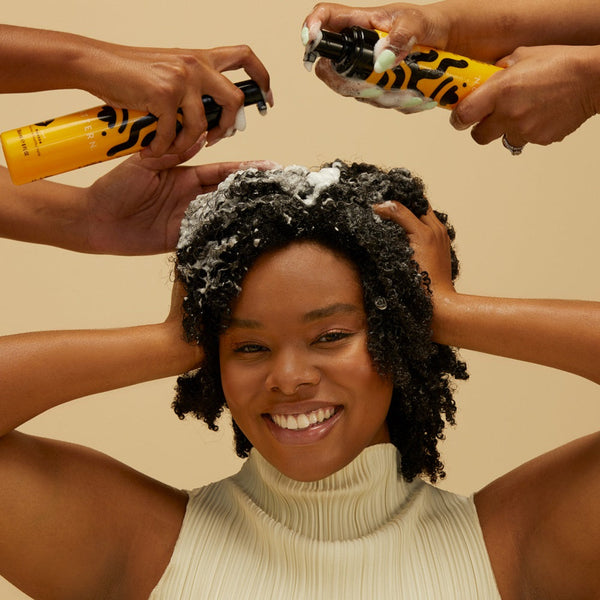When it comes to hair health, damage is a top cause for locks that feel like they need an extra boost. If you are experiencing a shift in the look & feel of your natural curl pattern, fear not. We're here to assure you that your curls can get back to their luscious, glossy & healthy state.
From nourishing treatments to essential styling techniques, we're ready to help your curls & coils spring back into action. Keep reading to learn our top tips on how to repair damaged curly hair naturally & get your bounce back.
What Are Common Signs of Damaged Curls?
“Damaged” hair can be a confusing term. What does hair damage actually mean? How can you tell if your curls are damaged or just having a day?
In short, damaged hair is damaged hairs. Without proper care, the hairs on your head can develop cracks in their outer layer (or cuticle). This can expose the precious inner layers of your hairs, which can release moisture & lead to less-than-glossy locks. You may notice these recognizable signs if your hair is damaged:
- Excessive breakage – If your hair breaks off at the slightest pull, then it’s likely due to damage. The torn cuticles on damaged strands will make it easier to break an entire hair. You may notice more hairs in your brush or comb, or more hairs falling out in the shower.
- Low elasticity – You know when your curls have that springy “bounce”? That’s actually a sign of healthy hair. When hair is damaged, it loses its elasticity or natural stretchiness. Your curls may appear less tight or “stretchable”, refusing to snap back into formation when pulled.
- Dryness – When the hair cuticle is lifted, it creates an easy opening for moisture to escape from its interior. This can leave you with curls that feel more dry and brittle due to a lack of moisture needed to maintain your gorgeous curl pattern.
- Split ends – Before your hairs break from damage, they may split at the ends. If you catch any two-pronged strands, it may be a sign of curl damage.
- Dullness – When you see healthy hair, you see it. A healthy sheen is a sign that your hair strands are moisturized & undamaged. When the cuticles begin to lift, moisture escapes & less light reflects off the hair, creating a less than radiant appearance.
What Are the Top Causes of Damaged Curly Hair?
Sometimes, the roots of your hair damage are very clear (hello, daily flat-ironing). Other times, it may seem like your hair doing a 180 overnight. What gives?
When learning how to repair damaged curly hair, it’s important to know just what’s causing. This is when understanding the different types of hair damage is very beneficial. Let's uncover the key culprits behind damaged curly hair so you can shield your locks from further harm & ensure their luscious vitality for years to come:
- Heat styling – Absolutely fabulous! That va-va-voom blowout is sizzling with style, but let's ensure we treat our precious locks with care. Excessive heat can be a bit too hot to handle, as it may strip away the hair's natural moisture, leaving it thirsting for hydration and susceptible to breakage. However, worry not, because our curl-conscious Blow Dryer allows you to effortlessly reduce the amount of heat applied to your curls. With its customizable settings, you have complete control to find the perfect balance for your hair.
- Chemical processing – The allure of a new hair color or a sleeker texture can be irresistible—but tread carefully. The chemicals in relaxers, texturizers & hair dyes can take a toll on your curls. These chemicals can weaken & damage the bonds between hair cells, resulting in loss of curl pattern & excess fragility.
- Poor detangling – Frequent use of heat tools & harsh chemicals in hair products aren't the only factors that can impact your natural curl pattern. Improper detangling & rough styling techniques can weaken & break your hair. Habits like vigorously coming or brushing while wet can lead to hair breakage. Remember to be gentle when you are detangling in the shower as curls are more fragile & break more easily when wet.
- Damaging hairstyles – If you’re a high ponytail type of girl, your hair might be paying a price for that sleek look. Any style that tightly pulls your locks can overstretch & break your hair, even leading to traction alopecia (or baldness from hair tension).
- Low moisture levels – Even those most luscious curls are naturally more prone to dryness due to their structure & reduced sebum distribution. Without use of proper moisturizing products, like shampoos & conditioners for curly hair, your hair cuticles may crack, giving more opportunity for moisture to escape.
- Environmental factors – Swimming in pools on the daily? Walking outside in desert-like environments? Exposure to the sun, wind, harsh weather conditions & chemicals can strip moisture from your hair. Though sometimes inevitable, exposure to certain environmental elements may lead to increased breakage over time.
How to Repair Damaged Curls: 4 Ways
Across all curly hair types, there are some common ideals—the look of defined curls & spirals, the enviable volume, the luscious shine. But when damage gets in the way, those idealistic curls can feel more & more like a fantasy.
Luckily, with the right care & tools for curly hair, you can help your spirals bounce back to their former splendor. Here are our top tips for how to fix damaged curly hair.
Tip #1: Pump Up the Moisturize
When it comes to curls, there’s one sure rule—moisture is love, moisture is life. But for damaged curls, in particular, moisture is so much more than this. It’s also a healing element.
Damaged hair loves moisture for a few reasons. The hydrogen bonds from water & moisturizing products help maintain your hair’s vital protein structure, smooth the outer cuticle & boost strand elasticity. Consider these top products to quench your hair’s thirst:
- Deep conditioning treatments – Regularly indulge in deep conditioning treatments with accessible, high-quality products, like PATTERN’s Intensive Conditioner, to replenish moisture & nourish the hair from within. Look for deep conditioners that contain ingredients like Shea Butter, Coconut Oil or Argan Oil to provide intense hydration & repair damaged strands.
- Hair masks – A mask is a simple apply-and-forget method you can use to moisturize your hair. Here’s how: Apply the mask when your hair’s wet, sleep on it & then rinse in the morning for extra-hydrated curls. Look for an enriching formula like PATTERN’s Treatment Mask, which contains Fermented Rice Water & Moringa Seed for natural healing moisture.
- Hair oil – Keeping your hair moisturized requires more than a simple conditioner. To preserve hydration, you also need a sealant—like a light hair oil. Try PATTERN’s Jojoba Oil Blend to effectively coat the hair cuticle & prevent much-needed moisture from leaving your locks.
Tip #2: Schedule a Trim (or Two)
Split ends are one of the telltale signs of hair damage—and even more breakage to come. Fortunately, you can stop the damage in its path with regular trims.
If you are experiencing signs of damaged hair, experts recommend getting a trim at least once every 8 to 12 weeks. By trimming curly hair split ends, you prevent further splitting & promote healthier hair growth, allowing your strands to thrive.
Tip #3: Turn Down the Heat
When your curls are damaged, excessive exposure to heat will only further contribute to the current state of your hair.
However, we get that heat can be an important styling tool that emphasizes your natural curl pattern. If you’re on a journey toward a healthier hair routine, try these tips to reduce the heat in your life:
- Use a heat protectant – Heat protectants are a key ingredient in the recipe for healthy, nourished, undamaged hair. These sprays work by distributing products that block heat from penetrating the hair cuticle, preserving its moisture & overall health. So, before any heat styling, liberally spray a heat protectant like PATTERN’s Heat Protectant throughout your hair for extra protection against heat damage.
- Try a heat-free style – Consider this a great opportunity for a style switch-up & give your heat tools a rest. Heat-free styles can keep your hair looking great without exposing it to damaging temperatures.
- Stick to low temperatures – If you have to use heat, try keeping it to a balmy temperature. Hair only begins to truly denature at heat around 350 degrees Fahrenheit. To prevent curl damage, stick with hot tools that can apply temperatures at 300 degrees Fahrenheit or lower such as PATTERN’s Blow Dryer.
Tip #4: Stay Protected
Sadly, your fave hairstyle may be leaving your curls feeling a little stretched. This is because hairdos with tightly pulled ponytails or braids can pull & break your hair. Instead, choose a protective style to preserve your locks.
When it comes to nurturing & repairing damaged curls, protective styles can be a game-changer. These versatile & stylish looks not only provide a shield against external elements, but they also help promote hair growth & minimize manipulation, allowing your curls to flourish. Here are some popular protective styles to consider:
- Box braids
- Twists
- Buns & puffs
- Low ponytails
- Bantu knots
- Box braids
- Headscarves & wraps
Making the transition from a relaxed to a protective au natural style? Try adding PATTERN's Transition Mask to your hair care routine—this nutrient-dense hair mask is an amazing way to prevent further natural hair shedding & breakage when transitioning away from chemicals, dyes & pulling hairstyles.
Call It a Curl Comeback with PATTERN
Fortunately, by identifying your damage & adopting pro-curl tips & routines, you can forge your own gentle path to curly glory—& as you bask in the deep conditioning treatments & protective styles, we’ll be here to cheer you on every step of the way.
At PATTERN, our curly hair products can help you unlock your juiciest, most joyful curls yet, right from the comfort of your own home. From deep conditioners to wide-tooth combs, our products are designed to help you nourish your strands, find your curl confidence & embrace your natural pattern. Explore our products & tools today to get started.
Sources:
Allure. The Most Common Causes of Hair Breakage and How to Fix Them at Home. https://www.allure.com/story/reasons-your-hair-is-breaking-off
Allure. What Is Conditioner? How and Why You Should Use in Hair-Care Routine — Tips. https://www.allure.com/story/what-does-a-conditioner-do-why-should-you-use-it
Byrdie. How to Know if Your Hair Is Damaged, According to the Experts. https://www.byrdie.com/how-to-know-if-your-hair-is-damaged-5115460
NIH. Chronic Renal Failure. https://www.ncbi.nlm.nih.gov/books/NBK535404/
NIH. The what, why and how of curly hair: a review. https://www.ncbi.nlm.nih.gov/pmc/articles/PMC6894537/
NIH. Traction Alopecia - StatPearls. https://www.ncbi.nlm.nih.gov/books/NBK470434/
Purdue University—Purdue e-Pubs. How Heat Affects Human Hair: Thermal Characterization and Predictive Modeling of Flat Ironing Results. https://docs.lib.purdue.edu/dissertations/AAI10808169/
Tech Radar. What causes heat damage to hair and why you should care. https://www.techradar.com/how-to/what-causes-heat-damage-to-hair-and-why-you-should-care
